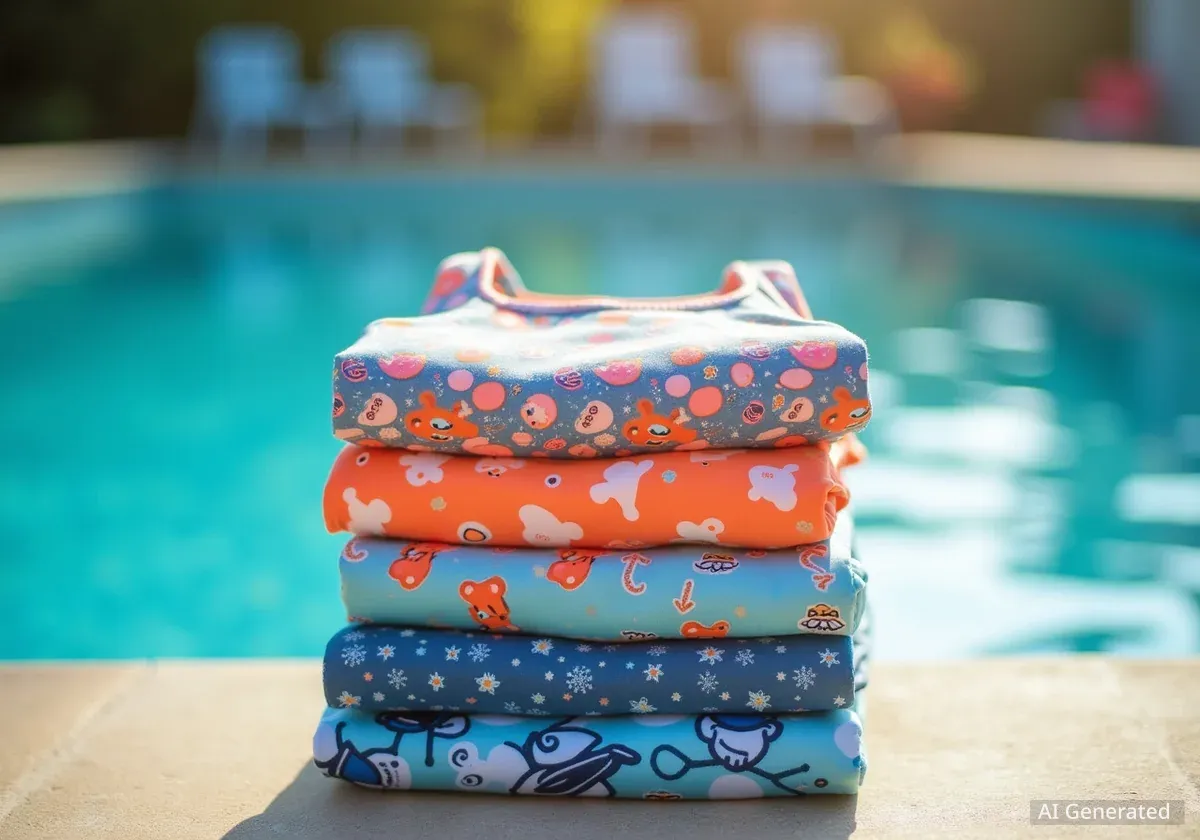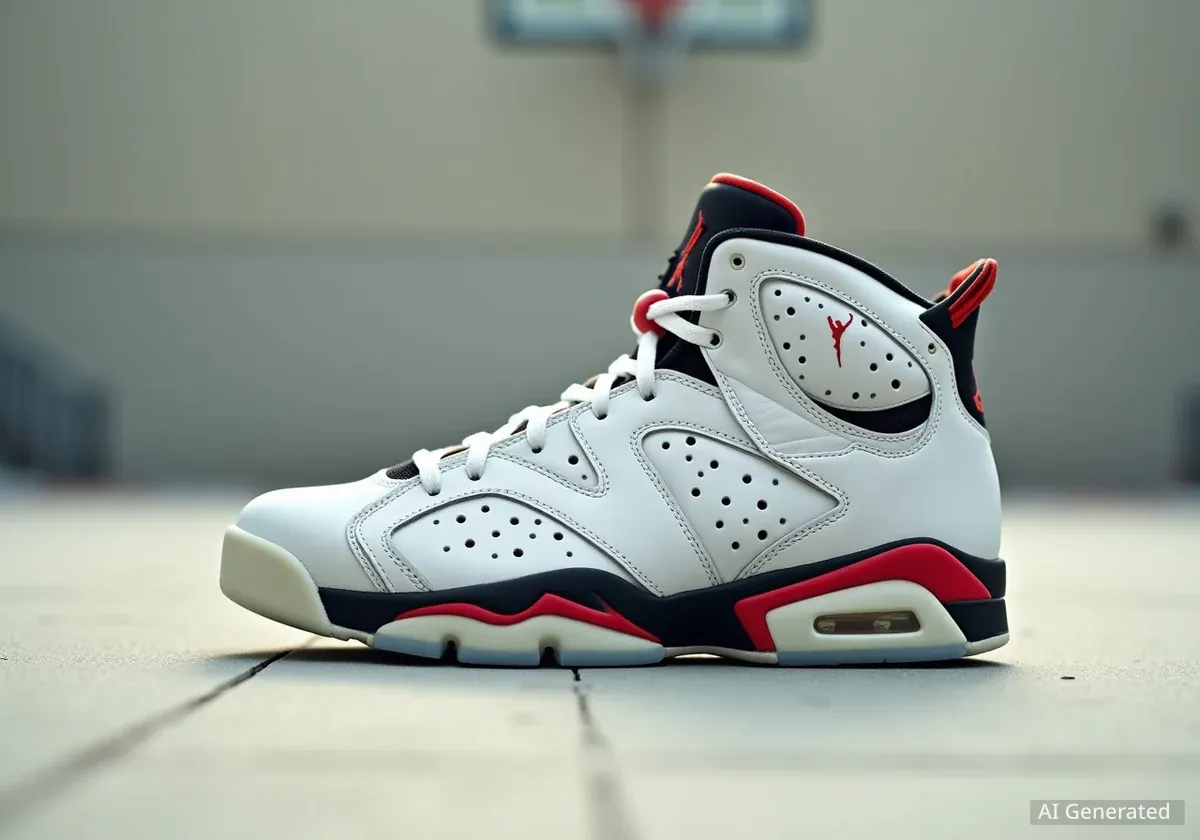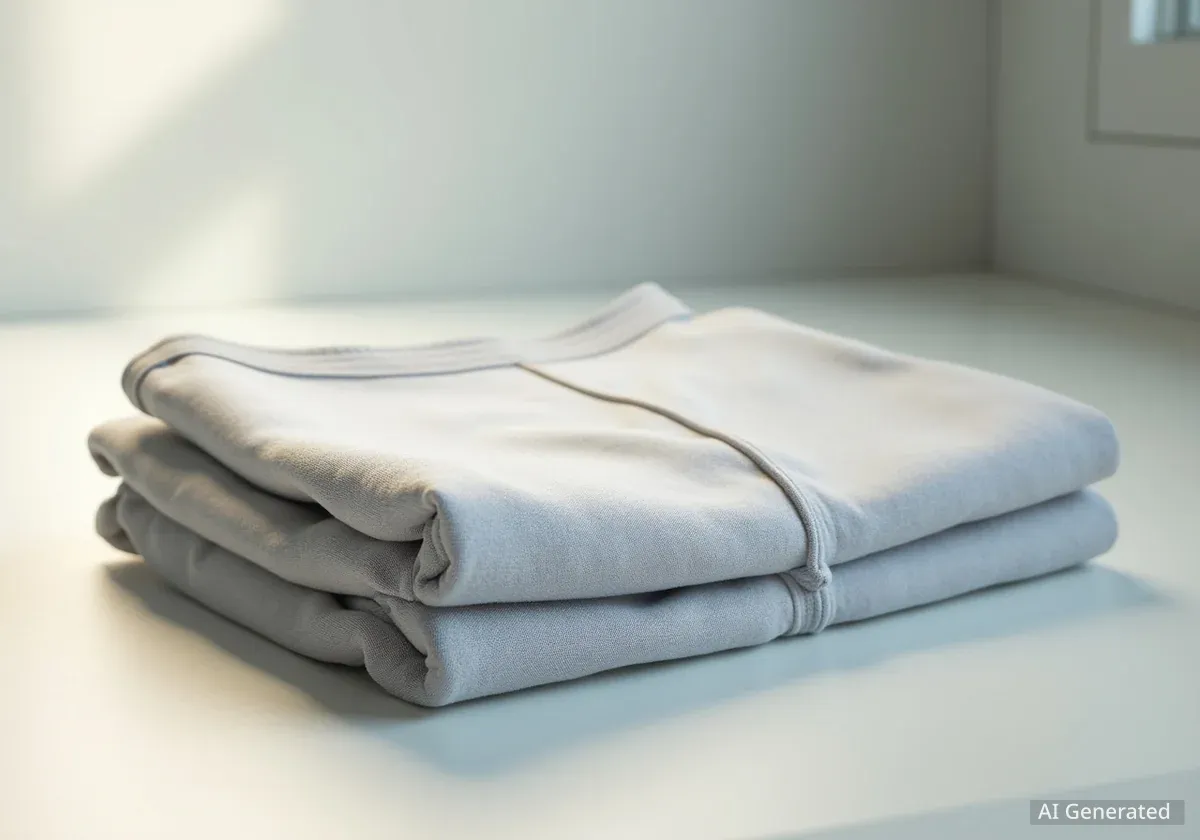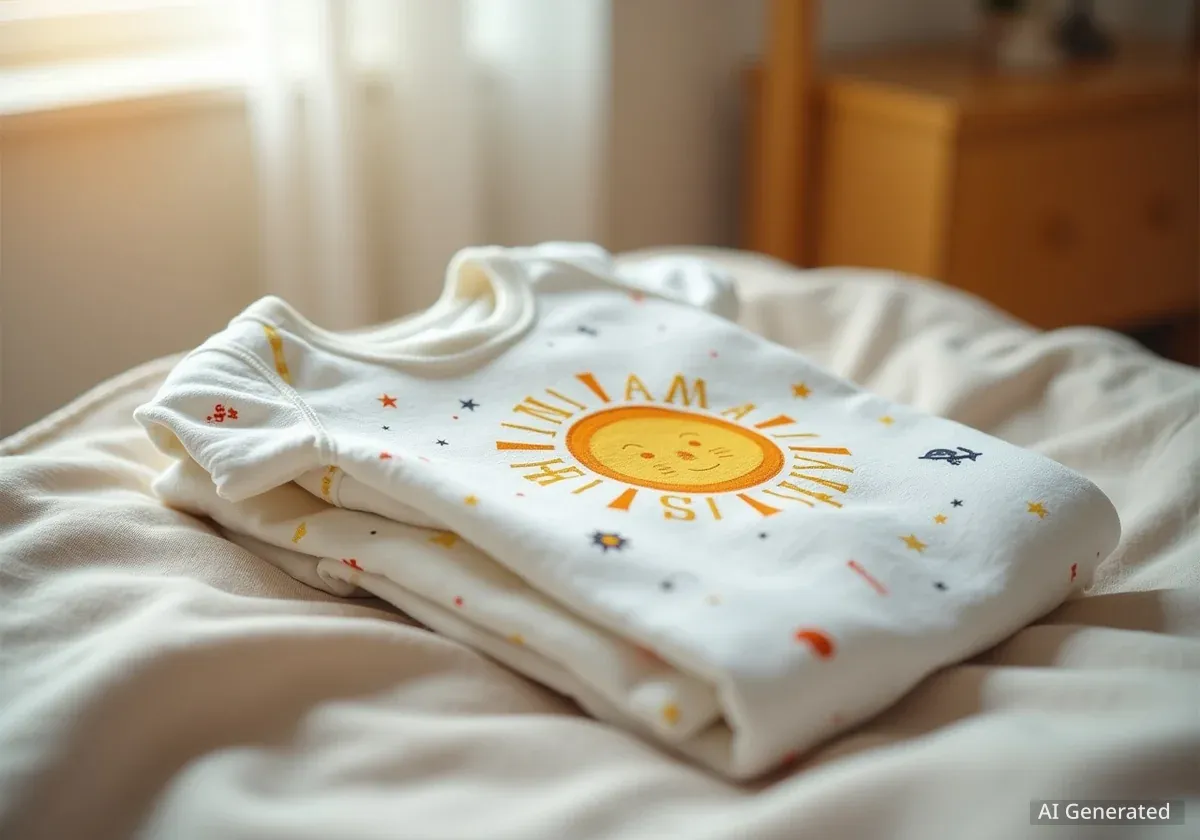The market for children's swimwear is increasingly focused on combining durable, comfortable materials with practical, child-friendly designs. A new two-piece bikini set for girls, featuring a polyester and spandex blend, highlights key industry trends such as adjustable features for a better fit and a wide range of sizes to accommodate children from toddlers to pre-teens.
This approach addresses common parental concerns regarding longevity, comfort, and sun protection in swimwear. The use of specific fabric blends and adjustable components is becoming standard as manufacturers aim to create products that can adapt to a child's rapid growth while withstanding the rigors of frequent use in chlorinated pools and saltwater environments.
Key Takeaways
- Children's swimwear commonly uses a polyester and spandex blend for durability, elasticity, and quick-drying properties.
- Adjustable features, such as shoulder straps, are critical for providing a secure and comfortable fit as children grow.
- The availability of a broad size range, from 3T to 11-12 years, caters to a wide demographic of young swimmers.
- Design elements, including vibrant patterns, are important for child appeal, while material quality remains a primary concern for parents.
Understanding Swimwear Fabric Composition
The choice of fabric is one of the most critical factors in the design and performance of children's swimwear. Most modern bathing suits, including recently released bikini sets for girls, utilize a blend of synthetic fibers to achieve a balance of comfort, durability, and function.
The Role of Polyester and Spandex
The primary material in many children's swimsuits is polyester, which constitutes a significant portion of the fabric blend. Polyester is favored for its exceptional durability and resistance to chlorine and sunlight, two elements that can quickly degrade other fabrics. This makes it an ideal choice for swimwear intended for frequent use in pools and at the beach.
Complementing polyester is spandex (also known by the brand name Lycra). While used in smaller quantities, spandex provides the crucial element of stretch. This elasticity allows the swimsuit to conform to the body for a snug fit, ensuring freedom of movement without sagging or becoming restrictive. The combination results in a garment that is both resilient and comfortable for active children.
Material Properties at a Glance
- Polyester: Provides structure, chlorine resistance, UV protection, and quick-drying capabilities.
- Spandex: Offers high elasticity for a form-fitting, comfortable stretch that allows for a full range of motion.
This blend is also known for being lightweight and breathable, which helps children stay comfortable both in and out of the water. Furthermore, the fabric is typically designed for easy care, with most products being machine washable, a significant convenience for parents.
Functional Design for a Growing Child
Beyond the material, the structural design of children's swimwear plays a vital role in its practicality and longevity. Manufacturers are increasingly incorporating features that allow a garment to adapt to a child's growth, extending its usable lifespan.
The Importance of Adjustable Straps
One of the most effective design elements is the inclusion of adjustable shoulder straps. This feature allows parents to customize the fit of the swimsuit top, ensuring it remains secure and comfortable. As a child grows taller, the straps can be lengthened to accommodate their changing torso size, preventing the suit from becoming too tight or restrictive.
"Adjustability is key in children's apparel. Features like adjustable straps mean the product doesn't just fit well on day one, but can continue to provide a proper fit for an entire season or even longer, offering better value for parents."
This simple mechanism helps maintain a proper fit, which is crucial for safety and comfort during water activities. A well-fitting swimsuit prevents chafing and ensures that the garment stays in place while a child is swimming, jumping, or playing.
Sizing for a Wide Age Range
To meet market demand, swimwear lines are offering an extensive range of sizes. It is now common to find products available in six distinct size brackets, covering a broad spectrum of ages:
- 3T
- 4T
- 5-6 Years
- 7-8 Years
- 9-10 Years
- 11-12 Years
This wide availability simplifies the purchasing process for parents, allowing them to find an appropriate size for children from early toddlerhood through their pre-teen years. The pull-on closure style is also a standard feature, designed for ease of use so that children can dress themselves with minimal assistance.
Aesthetics and Versatility in Use
While technical specifications like fabric and fit are paramount for parents, the visual appeal of swimwear is often the deciding factor for a child. Modern designs frequently incorporate vibrant, colorful patterns to capture a child's imagination.
From Poolside to Backyard Play
The versatility of today's children's swimwear means it is no longer limited to the beach or community pool. The durable and comfortable materials make these garments suitable for a variety of water-based activities, including backyard sprinklers, inflatable pools, and general outdoor summer play. This multi-purpose functionality adds to the product's overall value.
Designs like the "Sleeping Panda in Space" theme combine popular motifs with a bright color palette, making the swimsuit an exciting piece of apparel for a child to wear. Such engaging prints can make the experience of getting ready for swimming more enjoyable.
This focus on aesthetics does not detract from the product's practicality. The swimwear is designed for a range of environments, from structured swimming lessons in a pool to casual family vacations at the beach. The durable fabric blend ensures it can handle sand, salt, and chlorine, maintaining its color and shape over time.
Ultimately, a well-designed swimsuit serves as a functional tool for summer activities and a fun piece of clothing that a child is happy to wear. Many parents also consider such items as practical gifts for occasions like birthdays, holidays, or as a back-to-school essential for warmer climates.





